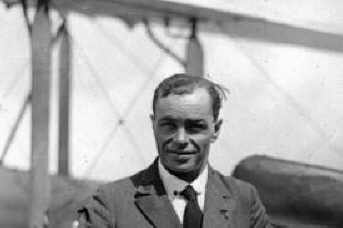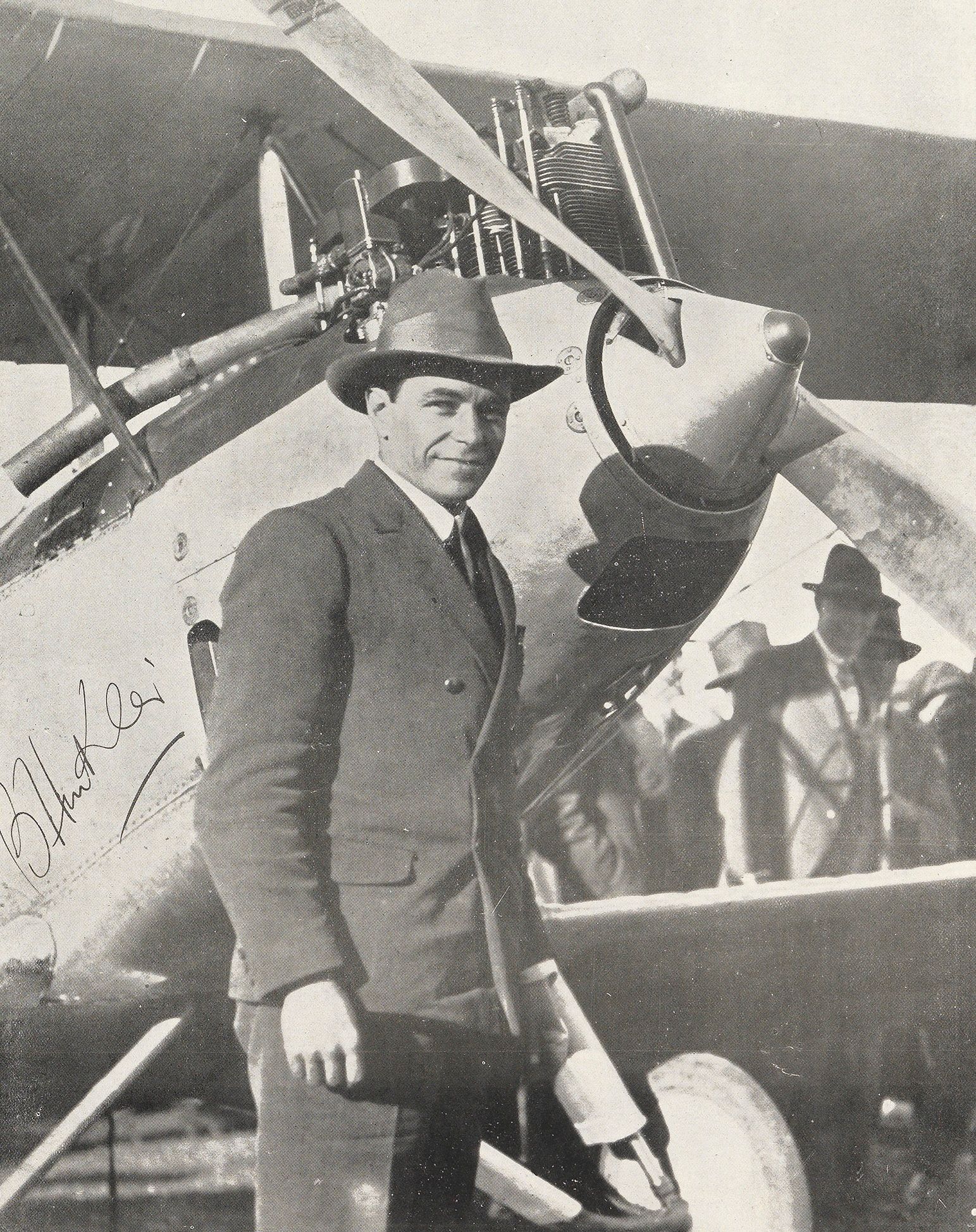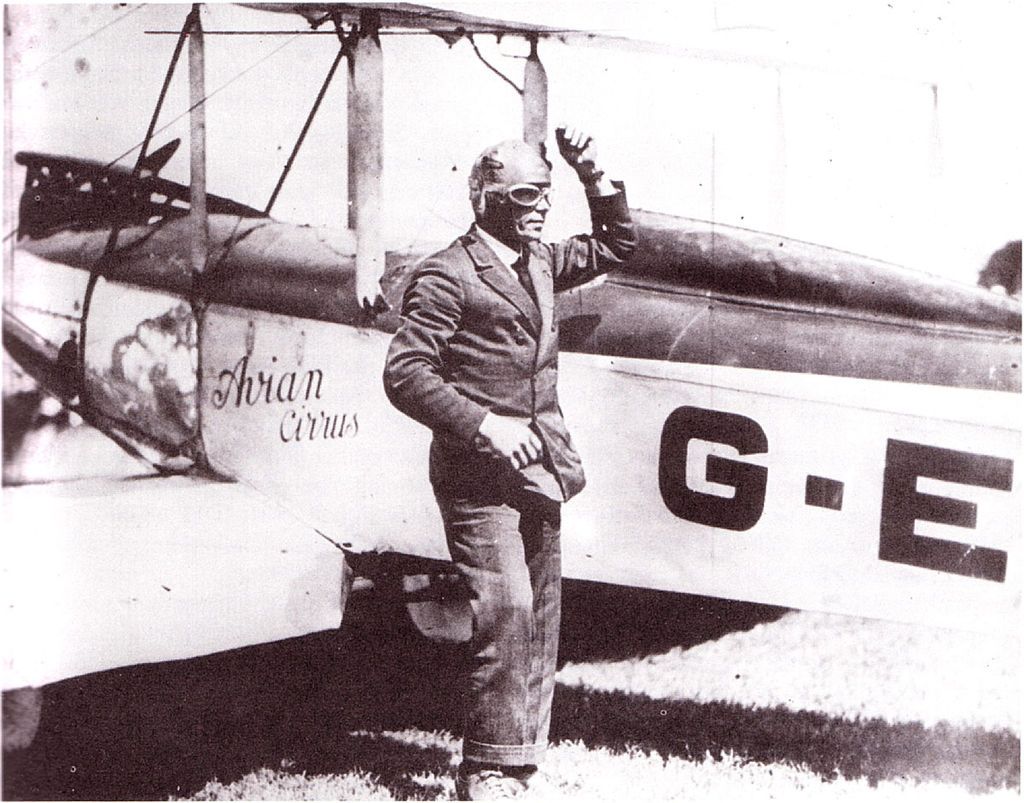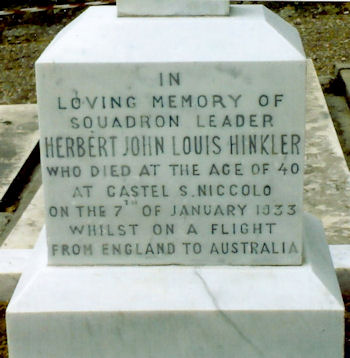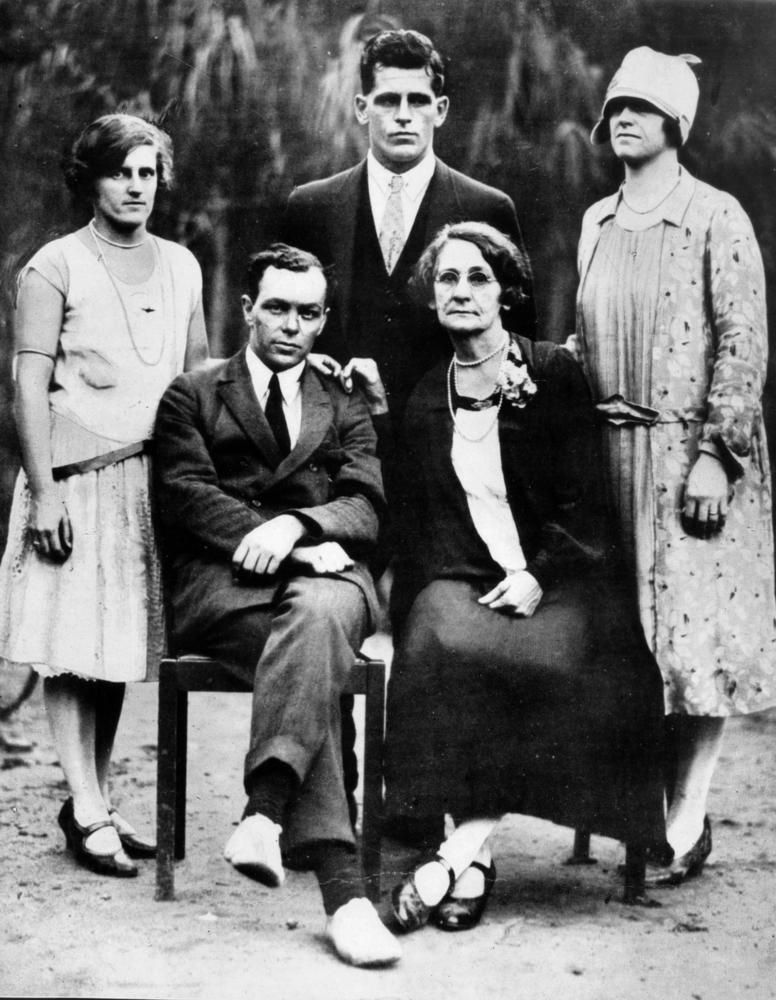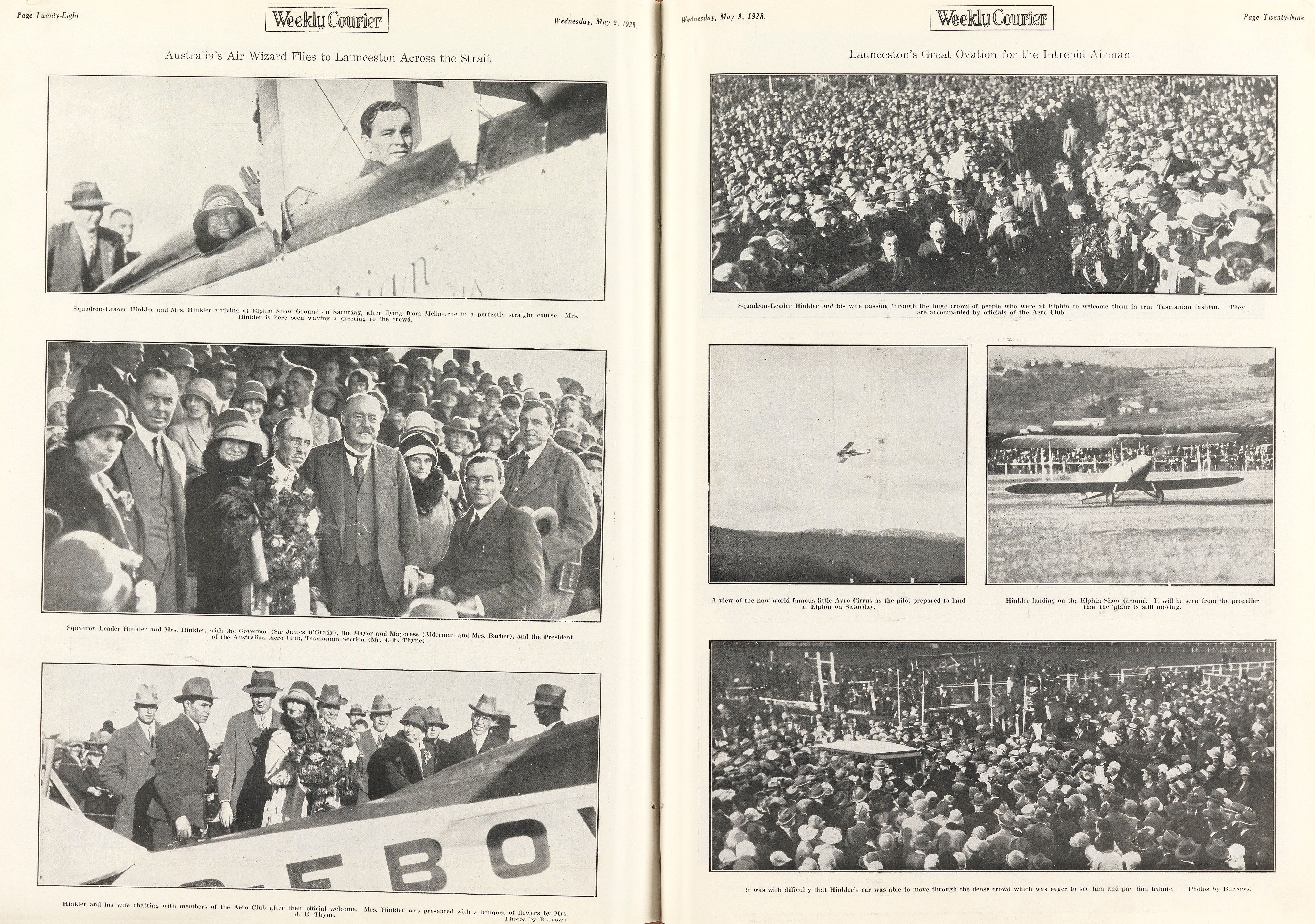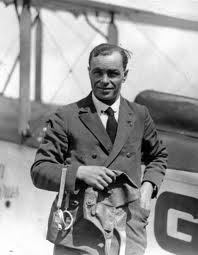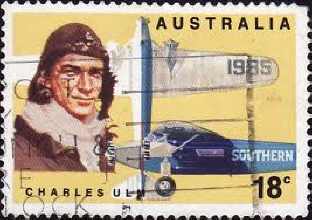Pioneer Australian aviator, he is also remembered for his aviation inventions which aided flight.
Born Herbert John Louis Hinkler, he was the son of John William Hinkler, a stockman (cattle rancher) and his wife, Frances Atkins (nee Bonney) Hinkler. While growing up, young Bert observed ibis flying from a lake near his school, and learning the principles of flying from them, he constructed two gliders, flying them on the beaches near his town. His interest in aviation growing, he met pioneer aviator Arthur Burr Stone at a traveling air show that came to his home town of Bundaberg, where Bert worked with him to solve a problem with Stone's Bleriot monoplane. When he was 21, Bert traveled to England to be quickly hired for work with the Sopwith Aviation Company, beginning his career in aviation.
When war broke out in 1914, Bert joined the Royal Naval Air Service as a gunner/observer, and initially served in Belgium and France, where he was awarded the Distinguished Service Medal. As the need for pilots increased, Bert was able to transfer to the Royal Air Force and learned to fly, becoming a pilot with the No. 28 Squadron, RAF, serving in Italy. During his military service, he showed exceptional mathematical and inventing skills, making several aviation instruments which were used for the next 20 years, including a device to correct drift in aircraft, and an adaptor for machine guns which deflected spent shell cartridges to one side away from the gunner. When the war ended, he was discharged, and immediately found work as a test pilot for aircraft manufacturer A.V. Roe in Southampton, England.
During the 1920s, he would compete in several aviation events. Although his plane crashed in his first attempt to fly from England to Australia in 1921, he would make the first solo flight to Australia in 1928, making the record breaking flight in just 15 days, earning him the press nickname of "Hustling Hinkler". Hinkler would win two Britannia trophies for flights in 1920 and 1928, as well as a gold medal from the Federation Aeronautique Internationale. After doing a tour of the cities of Australia, he returned to England, where he was awarded the Air Force Cross for his exploits.
In 1931, Bert flew a de Havilland Puss Moth aircraft from Canada to New York City, then non-stop to Jamaica, a remarkable flight of 1500 miles, then flew his airplane via Venezuela to Brazil, and across the south Atlantic Ocean to West Africa, and on to London, England, pioneering a longer, but safer route across the Atlantic from New York to London. For this feat, he was awarded the Segrave Trophy, the Johnston Memorial Prize, and another Britannia Trophy. This was the first solo flight across the South Atlantic, and the second solo flight to cross the Atlantic (Charles Lindberg was the first, in 1927).
In 1932, he married Hannah (Nance) Jarvis, but his marriage was short lived. On January 7, 1933, he took off from London, England, in his Puss Moth airplane in an attempt to recreate his solo flight to Australia and to break the current record of 8 days set by Charles W. Scott the previous year. Initially nothing was heard from him, until his broken aircraft and body were found in the Tuscan Mountains of Italy. His plane had smashed into a mountain in the Italian Alps the same day he took off from London, January 7, 1933. On Dictator Mussolini's orders, he was buried with full military honors in the cemetery at Florence, Italy.
Since his death, he has been honored with his name on several public buildings, roads, parks, and statues in his native Australia, his image has been used on a postage stamp, and his home in Southampton, England has been turned into a museum to his memory. (Biography by Kit and Morgan Benson)
Pioneer Australian aviator, he is also remembered for his aviation inventions which aided flight.
Born Herbert John Louis Hinkler, he was the son of John William Hinkler, a stockman (cattle rancher) and his wife, Frances Atkins (nee Bonney) Hinkler. While growing up, young Bert observed ibis flying from a lake near his school, and learning the principles of flying from them, he constructed two gliders, flying them on the beaches near his town. His interest in aviation growing, he met pioneer aviator Arthur Burr Stone at a traveling air show that came to his home town of Bundaberg, where Bert worked with him to solve a problem with Stone's Bleriot monoplane. When he was 21, Bert traveled to England to be quickly hired for work with the Sopwith Aviation Company, beginning his career in aviation.
When war broke out in 1914, Bert joined the Royal Naval Air Service as a gunner/observer, and initially served in Belgium and France, where he was awarded the Distinguished Service Medal. As the need for pilots increased, Bert was able to transfer to the Royal Air Force and learned to fly, becoming a pilot with the No. 28 Squadron, RAF, serving in Italy. During his military service, he showed exceptional mathematical and inventing skills, making several aviation instruments which were used for the next 20 years, including a device to correct drift in aircraft, and an adaptor for machine guns which deflected spent shell cartridges to one side away from the gunner. When the war ended, he was discharged, and immediately found work as a test pilot for aircraft manufacturer A.V. Roe in Southampton, England.
During the 1920s, he would compete in several aviation events. Although his plane crashed in his first attempt to fly from England to Australia in 1921, he would make the first solo flight to Australia in 1928, making the record breaking flight in just 15 days, earning him the press nickname of "Hustling Hinkler". Hinkler would win two Britannia trophies for flights in 1920 and 1928, as well as a gold medal from the Federation Aeronautique Internationale. After doing a tour of the cities of Australia, he returned to England, where he was awarded the Air Force Cross for his exploits.
In 1931, Bert flew a de Havilland Puss Moth aircraft from Canada to New York City, then non-stop to Jamaica, a remarkable flight of 1500 miles, then flew his airplane via Venezuela to Brazil, and across the south Atlantic Ocean to West Africa, and on to London, England, pioneering a longer, but safer route across the Atlantic from New York to London. For this feat, he was awarded the Segrave Trophy, the Johnston Memorial Prize, and another Britannia Trophy. This was the first solo flight across the South Atlantic, and the second solo flight to cross the Atlantic (Charles Lindberg was the first, in 1927).
In 1932, he married Hannah (Nance) Jarvis, but his marriage was short lived. On January 7, 1933, he took off from London, England, in his Puss Moth airplane in an attempt to recreate his solo flight to Australia and to break the current record of 8 days set by Charles W. Scott the previous year. Initially nothing was heard from him, until his broken aircraft and body were found in the Tuscan Mountains of Italy. His plane had smashed into a mountain in the Italian Alps the same day he took off from London, January 7, 1933. On Dictator Mussolini's orders, he was buried with full military honors in the cemetery at Florence, Italy.
Since his death, he has been honored with his name on several public buildings, roads, parks, and statues in his native Australia, his image has been used on a postage stamp, and his home in Southampton, England has been turned into a museum to his memory. (Biography by Kit and Morgan Benson)
Family Members
Sponsored by Ancestry
Advertisement
Explore more
Sponsored by Ancestry
Advertisement








